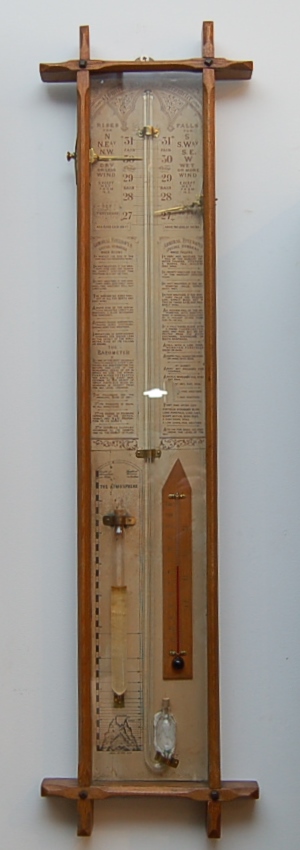How were antique barometers used in the past
Have you ever wondered how antique barometers were used? If you have an antique barometer in your home or business for decorative purposes, you may be wondering what your decoration was originally used for. While antique barometers are often very ornate and beautiful, they served an important purpose for their original owners, and learning about how they worked and what they were used for should only enhance your appreciation for them.

Why are antique barometers often so well made with such elaborate decorative features and expensive materials? What a lot of people may not realize is that the original design for barometers was based on the use of mercury. Mercury was very expensive when barometers were first designed, so only wealthy people could afford them. To market them effectively to wealthy people, barometers were designed to be very striking, a fitting design choice for an item meant to convey wealth.
What Exactly Do Barometers Do?
Barometers measure barometric pressure, that’s the pressure of the atmosphere at a given point on the surface of the planet at a given point in time. This is possible, at least with the first barometers, through the use of mercury and a sealed tube. Mercury levels fluctuate at a known rate based upon changes in barometric pressure, thus the barometer was born.
How Did Scientists Use Antique Barometers?
Prior to the advent of barometers any attempts at predicting short term changes in the weather largely revolved around looking out, seeing clouds, and assuming that a storm was on the way. While it’s possible to sometimes guess correctly, there’s also a good chance that the clouds will head in the opposite direction. So, the appearance of clouds, and even the scent of rain in the air are indicators that rain may be on the way, but they are not exactly reliable.
When the barometer was invented the ability of scientists to predict short term changes in the weather increased dramatically. When a barometer drops that indicates that a low-pressure system was moving in. Low pressure means that clouds will be drawn in instead of pushed away, which increases the chance for rain. Using a barometer along with other pieces of information made it possible for the weatherman, or the weather app on your phone to give you a fairly accurate prediction of rainfall in the near future.
How Did Farmers Use Antique Barometers?
When you are a farmer one of the most important things that you need to account for is rain. Crops need water, and that water typically comes from two sources, irrigation, and rain. If it’s going to rain soon a farmer wouldn’t want to irrigate his fields for two reasons. First, irrigation is an expense. Water isn’t free, and a farm is a business, and all businesses need to make a profit. One of the most important things that all businesses need to do is to reduce expenses. So, if a farmer had a barometer, and the barometric pressure dropped indicating that a storm would be moving in, avoiding irrigating while waiting for that storm would cut down on the water bill.
The other reason that a farmer wouldn’t want to irrigate a field when rain is expected is that too much water could damage crops. If a farmer irrigated a field to provide for the water needs for his crops, then heavy rainfall followed, that could actually damage or kill his crops. So, being able to predict short-term weather is very important for farmers since it helps them save money and helps to prevent them from overwatering their crops.
How Did Navigators Use Antique Barometers?
It may surprise you to learn that navigators and pilots began to use barometers once the portable aneroid barometer was invented. How could having an understanding of barometric pressure help a pilot? Well, barometric pressure fluctuates, and one of the factors that plays a significant role in those fluctuations is altitude. As a general rule of thumb, the higher in altitude a point is, the lower the barometric pressure. How does that work? It’s simple actually. The higher you are the less atmosphere is above you, which means less pressure caused by the atmosphere. Pilots and navigators used a barometer as a valuable tool to help tell when they are ascending or descending during flight.
